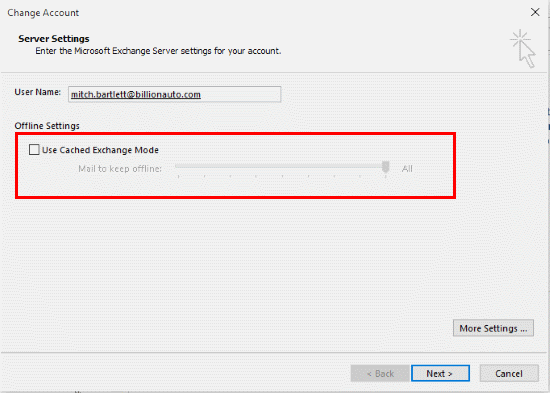
- Delete Microsoft Office Cache Mac Catalina
- Delete Microsoft Office Cache Mac Pro
- Delete Microsoft Office Cache Mac
In today's lesson, you will learn how to clear cache in Outlook for macOS.This option is available for the Exchange account type. Some elements of the Excha. If the files aren’t synced up, they will be lost when you clear the cache. You can back them up by moving the files to a new folder because you will need to empty the OneDrive folder and allow it to resync after clearing the cache. The cache is stored in folders under the local app data path, at C: Users Diane AppData Local Microsoft Office. Tap on the small box below the cache settings which will have Delete files from Office document cache when they are closed to its right. Step 4: Now select the delete cached files option to delete your files that are cached. Also,there are also options to choose the number of days after which it gets cleared automatically. Sudo atsutil databases -remove Terminal will then ask for your admin password. As you type, it will not show anything, so be sure to enter it correctly. This command removes all font cache files.

You can remove an add-in that you've previously sideloaded on Windows, Mac, or iOS by clearing the Office cache on your computer.
Additionally, if you make changes to your add-in's manifest (for example, update file names of icons or text of add-in commands), you should clear the Office cache and then re-sideload the add-in using updated manifest. Doing so will allow Office to render the add-in as it's described by the updated manifest.
Clear the Office cache on Windows
To remove all sideloaded add-ins from Excel, Word, and PowerPoint, delete the contents of the folder:
If the following folder exists, delete its contents too:
To remove a sideloaded add-in from Outlook, use the steps outlined in Sideload Outlook add-ins for testing to find the add-in in the Custom add-ins section of the dialog box that lists your installed add-ins. Choose the ellipsis (...) for the add-in and then choose Remove to remove that specific add-in. If this add-in removal doesn't work, then delete the contents of the Wef folder as noted previously for Excel, Word, and PowerPoint.
Additionally, to clear the Office cache on Windows 10 when the add-in is running in Microsoft Edge, you can use the Microsoft Edge DevTools.
Tip
If you only want the sideloaded add-in to reflect recent changes to its HTML or JavaScript source files, you shouldn't need to clear the cache. Instead, just put focus in the add-in's task pane (by clicking anywhere within the task pane) and then press F5 to reload the add-in.
Delete Microsoft Office Cache Mac Catalina
Note
To clear the Office cache using the following steps, your add-in must have a task pane. If your add-in is a UI-less add-in -- for example, one that uses the on-send feature -- you'll need to add a task pane to your add-in that uses the same domain for SourceLocation, before you can use the following steps to clear the cache.
Install the Microsoft Edge DevTools.
Open your add-in in the Office client.
Run the Microsoft Edge DevTools.
In the Microsoft Edge DevTools, open the Local tab. Your add-in will be listed by its name.
Select the add-in name to attach the debugger to your add-in. A new Microsoft Edge DevTools window will open when the debugger attaches to your add-in.
On the Network tab of the new window, select the Clear cache button.
If completing these steps doesn't produce the desired result, you can also select the Always refresh from server button.
Clear the Office cache on Mac
Add-ins are often cached in Office for Mac, for performance reasons. Normally, the cache is cleared by reloading the add-in. If more than one add-in exists in the same document, the process of automatically clearing the cache on reload might not be reliable.

You can clear the cache by using the personality menu of any task pane add-in.
Choose the personality menu. Then choose Clear Web Cache.
Note
You must run macOS version 10.13.6 or later to see the personality menu.
You can also clear the cache manually by deleting the contents of the ~/Library/Containers/com.Microsoft.OsfWebHost/Data/ folder.
Note
If that folder doesn't exist, check for the following folders and if found, delete the contents of the folder:
~/Library/Containers/com.microsoft.{host}/Data/Library/Caches/where{host}is the Office application (e.g.,Excel)~/Library/Containers/com.microsoft.{host}/Data/Library/Application Support/Microsoft/Office/16.0/Wef/where{host}is the Office application (e.g.,Excel)~/Library/Containers/com.microsoft.Office365ServiceV2/Data/Caches/com.microsoft.Office365ServiceV2/~/Library/Containers/com.microsoft.Office365ServiceV2/Data/Library/Caches/com.microsoft.Office365ServiceV2/
Clear the Office cache on iOS
Delete Microsoft Office Cache Mac Pro
To clear the Office cache on iOS, call window.location.reload(true) from JavaScript in the add-in to force a reload. Alternatively, you can reinstall Office.